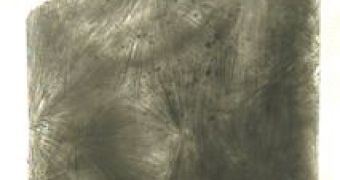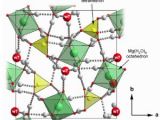How about if you could be replicating Mars' geology in your garage? This is what geologist Ronald C. Peterson has done, recreating structures similar to those seen by the NASA rovers. He has discovered a new mineral reaction that could help explaining the mountainous landscape of Mars. His discovery might be relevant for where the water on Mars has gone and might have implications for NASA's next mission to the Red Planet.
Peterson, who works at Queen's University, used a household chemical, Epsom salt, in his garage. His garage happens to be unheated. The salt easily absorbs water and changes its crystalline structure while doing so.
But because of the below freezing temperatures in the garage for several days, the salt turned into an unusual crystal. When later on, as the temperature increased, this crystalline structure melted and mould-like channels and gullies appeared. They resemble the structures seen on Mars by the NASA rovers.
"Satellites orbiting Mars show us images of canyons and gullies that appear to have been created by a flood or rapid out-washing," says Dr. Peterson. "These rovers, currently moving about on the planet's surface also show us that there is currently no visible water on the surface of Mars, but that there was in the past."
According to Peterson, the layered rocks seen by the rovers are indicative of sediments manipulated by water. However, the amount of water needed to create the structures is nowhere to be seen.
So, he thinks that maybe a reaction similar to that experienced by the Epsom salt in his garage had happened on Mars. Water could have interacted with the rocks on the surface of the planet to create an acidic cocktail, which created layers of material. When the surface layer melted, it created the topography that exploration rovers see today.
"The existence of ice, low surface temperatures, and the high sulfate content of surface rocks and soil on Mars makes [the modified Epson salt] a likely mineral species on the surface at high latitudes or elsewhere in the subsurface," he wrote in a study published this week by Geology, a publication of the Geological Society of America. "If an evaporite layer consisted of this phase, incongruent melting would result in a rapid release of a large volume of water, and could explain some of the landform features on Mars that are interpreted as outflow channels. The confirmation of [the modified Epson salt] on the surface of Mars would allow the designation of a new mineral species on another planet."
Next week, Dr. Peterson will go to NASA at the Johnson Space Centre in Houston to discuss his insight. NASA is interested in this theory because there are plenty of evidences that Epsom salt might be present on Mars ? as well as on Jupiter's moons.
In 1976, the Viking landers had carried out the first analyses of the local soils, using X-ray fluorescence spectroscopy. They found the soil is abundant in sulfur and chlorine. Geochemical modeling analyzing the stability of various possible substances had revealed that Epsom salt might be one of the substances present there. In 1997, the Sojourner rover used alpha-particle and X-ray spectrometer and detected a strong correlation between MgO and SO3 which is considered good evidence for the Epsom salt. More recently, the Opportunity Mars rover had analyzed the sediments and discovered they formed under the influence of acidic water.
"These findings may help us better understand the surface of Mars," says Dr. Peterson. "These possible new minerals that may be found on Earth help us see that although there are many differences between Earth and Mars, such as atmosphere and gravity, there are many things that are the same ? it is another world, but there are certainly similarities."
See also: The story of the Epsom Salt.

 14 DAY TRIAL //
14 DAY TRIAL // 

